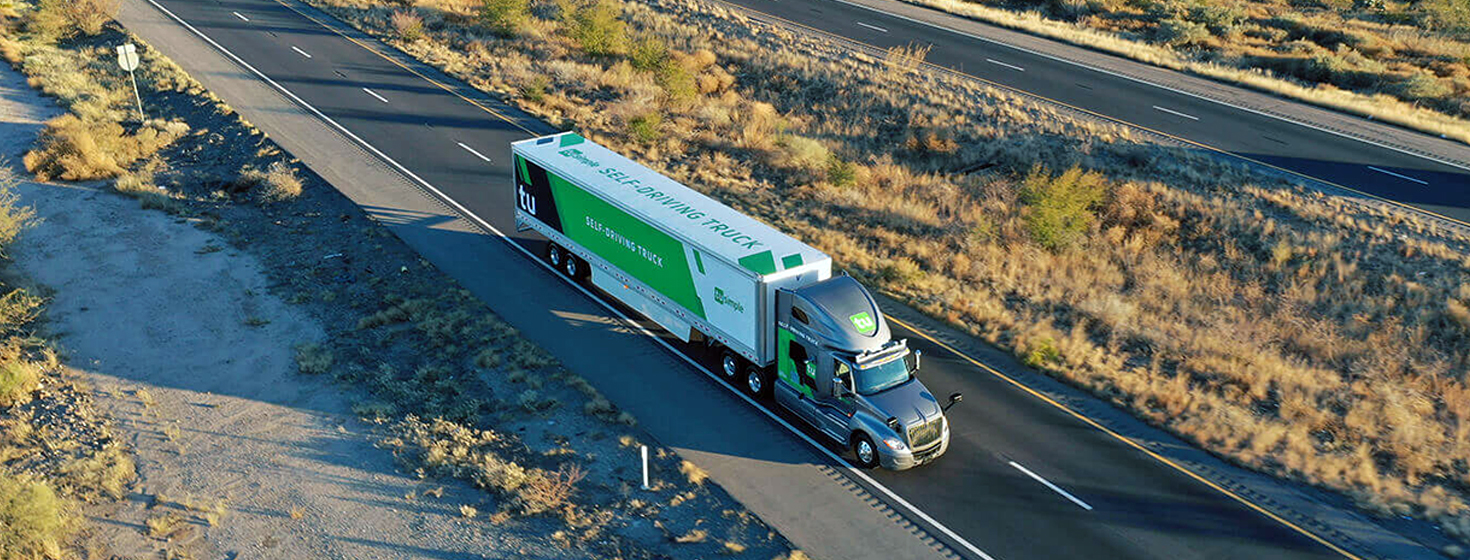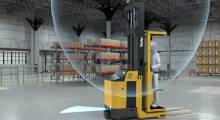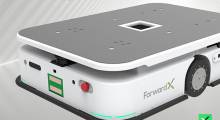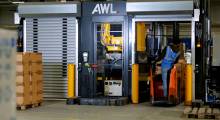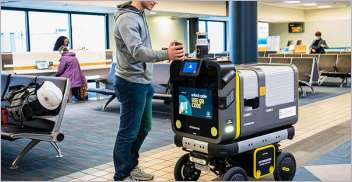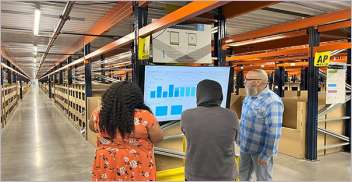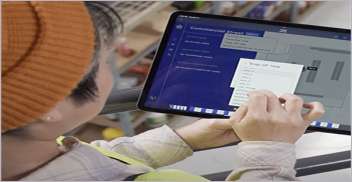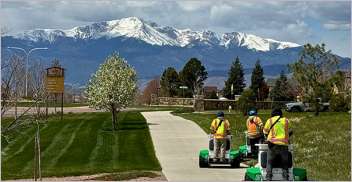Driverless Cars and Trucks
Forget what the experts and technogeeks are predicting for the era of driverless cars and trucks.
What are the oddsmakers saying?
Actually, Las Vegas is quite bullish on the prospect of driverless vehicles.
In fact, Jim Murphy, an oddsmaking consultant for sports and non-sport novelty bets focused on the entertainment business, politics, technology and financial markets, is predicting that 21 million autonomous cars will be sold within the next 15 years.
“Autonomous cars - better known as ‘self-driving cars’ - may seem the stuff of science fiction but they’re close to becoming reality,” says oddsmaker Murphy of sportsbettingexperts.com.
His over/under on deaths this year involving autonomous vehicles? Two-and-a-half.
If you bet the over, you can make $150 for a $100 bet. Under two-and-a-half deaths in autonomous vehicles will cost you $170 to earn $100.
“Despite plenty of Luddite media scare stories autonomous cars are safer than traditional vehicles,” Murphy says.
But actually, there is a lot of work being done behind the scenes involving some of the biggest names in and out of transportation.
Daimler AG and its business units Mercedes-Benz and Daimler Trucks has its “Future Truck 2025” already on the highways and has partnered with Uber Technologies Inc. Apple, Microsoft, Ford, and many others are also involved in the development of autonomous vehicles.
There is another combine, Waymo/Google/Alphabet, working out kinks in the technology. Lyft and General Motors are combining efforts. And of course, Tesla and its innovative CEO Elon Musk, the peripatetic Canadian-American business magnate, investor, engineer, and inventor are bullish.
The U.S. chip-making giant Intel announced Monday that it had reached a deal to acquire an Israeli company called Mobileye for $15 billion. The combination is expected to accelerate innovation for the automotive and trucking industry and position Intel as a leading technology provider for highly and fully autonomous vehicles.
So What’s Happening in Trucking?
Last October, a unit of Uber called Otto successfully produced a self-driving truck that hauled a load of Budweiser beer without incident on a 120-mile trek through Colorado.
Otto’s co-founder, Anthony Levandowski, a former self-driving car engineer for Google, has said he believes the most important thing computers will do over the next ten years is drive cars and trucks for people.
That will have huge human resources ramifications for trucking, which currently has a shortage of 20,000 drivers that could grow to more than 100,000 within a decade because of demographics, increased drug and alcohol testing and tougher security screenings.
Driverless trucks would change that dynamic in a hurry. “We are going to see a wave and an acceleration in automation, and it will affect job markets,” Jerry Kaplan, a Stanford lecturer and the author of “Humans Need Not Apply” and “Artificial Intelligence: What Everyone Needs to Know,” recently told the L.A. Times.
“Long-haul truck driving is a great example, where there isn’t much judgment involved and it’s a fairly controlled environment.”
Preparing for such a day, the trucking industry is rapidly coming to grips with how driverless trucks may be regulated.
The Trucking Alliance Board of Directors, which represents eight large trucking companies that operate 68,000 trucks, 175,000 semitrailers and containers, and employ more than 52,000 people, unanimously passed a resolution that “supports the development of advanced vehicle technologies that enable commercial drivers to utilize highly automated driving systems, enhancing their safety and security.”
The Trucking Alliance also supports the use of these technologies to achieve safety performance levels that rival commercial airlines and support other initiatives that focus on drivers and their safety, such as the following:
- Supports advanced driver-assisted technologies in commercial vehicles, rather than commercial vehicles that rely solely on full automation;
- Believes that commercial drivers are an indispensable asset to the safe operation of commercial vehicles;
- Maintains the principle that commercial drivers are necessary to improve the safety and security of the general public; and
- Believes that commercial drivers are integral to supply chain accountability. This would include managing unforeseen weather events, emergencies, detours, vehicle conditions, computer software programs, cybersecurity disruptions, cargo security, and in providing efficient customer services.
Meanwhile, an autonomous truck with a big “brain” has been launched by Embark, a San Mateo, Calif.-based company whose employees include alumni from SpaceX, Audi’s self-driving team and StanfordAl (artificial intelligence).
Embark has built an autopilot system with a “central cortex” that uses a combination of sensors, radars, and cameras that not only assess the environment to prevent crashes but can learn and adapt what it has learned to new situations.
Embark’s truck uses a combination of radars, cameras and depth sensors known as LiDARs to perceive the world around it. These millions of data points from these sensors are processed using a form of Artificial Intelligence known as Deep Neural Nets or DNNs.
“Analyzing terabyte-upon-terabyte of real-world data, Embark’s DNNs have learned how to see through glare, fog and darkness on their own,” Alex Rodrigues, CEO and co-founder of Embark, said in a statement.
“We’ve programmed them with a set of rules to help safely navigate most situations, how to safely learn from the unexpected and how to apply that experience to new situations going forward,” he added.
For now, Embark doesn’t intend to deploy fully autonomous trucks onto the nation’s highways. Rather, it intends to test them on long stretches of highway where the trucks are less likely to run into traffic congestion.
This is likely how driverless trucks will work at its infancy: At the city limit, Embark's computerized truck hands off to a human driver who navigates the city streets to the destination. A human driver will still touch every load, according to an Embark news release, “but with Embark they’re able to move more loads per day, handing off hundreds of miles of freeway driving to their robot partners.”
Rodrigues said the idea for Embark came after blowing a tire on the interstate and waiting four hours for the tow truck to arrive.
“Every single 18-wheeler that drove past had a sign on the back 'Drivers Wanted.' It was so clear there was a shortage of drivers,” he said.
Starsky Robotics has already used its autonomous trucks for paying gigs, including a 5,000-lb haul covering 140 miles, with 120 of those driven by the truck itself. It’s also moved trailers around a truck yard without anyone behind the wheel, a task that’s usually a time-consuming chore for someone or a team who has to get in and out of cabs. And Starsky’s tech doesn’t want to replace human divers – it wants to increase their quality of life.
The company is using autonomous capabilities where it can, but it’s also employing remote control driving when its trucks leave highway stretches, meaning a driver doesn’t have to be fully dedicated to a single vehicle in one physical location in order to do their job. They also don’t need to be present for the long miles of uneventful highway driving, which theoretically means safer roads due to less fatigue, and, Starsky claims, local driver schedules with higher, long-haul driver pay.
Starsky’s tech is also looking to make an impact now, by using components and techniques that are currently available at prices which are palatable to truck purchasers and manufacturers. That’s why it isn’t using LiDAR in its system since it says it believes waiting for the cost curve to come down on that tech, which uses lasers to map surroundings to very high resolution, is “a moral hazard.”
Instead, Starsky’s solution uses computer vision, radar and software acting in tandem, which it says is “well understood,” and means it can start adding safety benefits to driving now, instead of way down the road. Likewise, Starsky says its focus on building small robots that can control the existing control mechanisms of a truck physically, instead of on overhauling the truck with modified control systems, actually means more control functionality is possible – and retrofitting existing vehicles is easier.
Starsky has already run a highway haul, as mentioned, which is the first step towards offering regular service in the course of the next few months. It’s also going to aim to get human drivers out of some vehicles entirely by the end of 2017.
U.S. Department of Transportation
Transportation Secretary Elaine Chao said recently she is excited about the new automated technologies that have the potential to “dramatically change commercial transportation” and private travel, expanding access for millions.
“The private sector is driving these innovations, working with cities and states like yours to demonstrate the safety and efficiency of automated cars and trucks,” Chao recently told a gathering of state highway officials at the annual meeting of the American State Highway and Transportation Officials (AASHTO).
“Automated technology, which includes autonomous or driverless vehicles, also has the potential to improve safety on our roads and highways, which is always a priority,” Chao said.
She noted 35,092 people died in traffic crashes in 2015, a 7 percent increase over the previous year. In the first nine months of 2016, fatalities increased again by 8 percent over the previous year. Research shows that 94 percent of crashes are due to human error.
“Automated technology has the potential to help eliminate human error and reduce crashes and fatalities,” Chao said. “So there’s a lot at stake in getting this technology right.”
Related Article: UPS Invests In Autonomous Trucking Company TuSimple
Article topics
Email Sign Up





